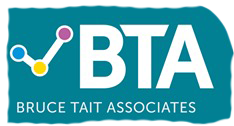11 June 2013 / BTA
Home
/ News & Views
/ 7 Simple Rules - How to Write a Great Job Application
Have you ever wondered why even though you apply for lots of roles, either you don't hear back or miss out on shortlisting? It might be the case that you've got some excellent skills and experience and you know that you would be a great candidate for a role - but that's just where there may be an issue - YOU know you would be, but are you making it clear enough?
Often applications can come in to recruitment agencies and charities which aren't always clear to read, or lack some crucial information about you, like a particular type of experience or how many events you've organised. Very often application forms can come in where the recruiter or charity can see potential in a prospective candidate gives them a call and finds out that in fact they would make a great candidate!
So the question is, how do you fill out an excellent, clear and descriptive application form? We've come up with a few tips below to try and help, and if you've got any other helpful tips then we'd love to hear from you - simply email us.
1. Read the Application Pack Thoroughly -
It may sound like a simple request, but often when prospective candidates come to fill in their application form they can sometimes forget that they need to address every point in the application pack. If there is a list of essential and desirable skills or qualities, list these down and explain how you match each of them. If there are certain personal qualities or interests that the charity asks for then explain and give examples. Remember that you may have transferrable skills too - there might for example be a mention of event management as a charity member, but if you've managed an event as a volunteer then that is still useful to mention!
2. Give Examples -
Quite often a candidate may say that they are good at such and such, but if you've not given evidence showing how or why you are whatever this is then its difficult for the recruiter or charity to appreciate your abilities.
3. Be Clear -
don't presume that recruiters of charities will understand everything without explanation - of course you don't need to explain what fundraising is, but if you're using business style abbreviations then it can be useful to explain these if relevant. Also, often candidates are willing to move location for a role, and if this is the case then make it clear on your application. We've all been confused when a candidate living in Sydney applies for a role in Edinburgh - until we find out that they have been in a temporary role abroad and are moving back to the UK!
4. Try Not to Leave it Too Late -
We all live busy lives, but if there's any chance that you can get your application form filled out a week or so before the closing date you are really setting yourself up for lots of benefits (not only concerning your blood pressure). If you fill out your form in advance then you can get friends and family to check it for you for little mishaps or you might even be able to get in contact with the recruitment agency and ask that they briefly look it over before you send the final version to them. A fresh set of eyes over your application can be very helpful.
5. Don't Panic, Ask for Help -
If you're having difficulty filling in your application form, get in touch with the recruiter and ask for a bit of help, we are always happy to do this. Sometimes things can be confusing in this kind of form so a hand can be very welcome.
6. Do Your Research -
You might be surprised by the number of potential candidates who don't do their research on the charity whose role they are applying for. You'd think that surely candidates would want to know exactly what kind of charity they are effectively signing themselves up to possibly be a part of! Particularly when it comes to interview it is essential that you're up to date with the main facts about the charity. No one wants to asked in interview what they think of the £2 million project which the charity is fundraising for, only to have not known about it at all. Show your interest and passion for the charity you are applying for!
7. Simply Does It -
We're talking about the presentation of your application (or indeed CV or covering letter too). As a rule of thumb size 12 or 10 Ariel font is a safe option. Don't use comic sans. Ever.
We hope you enjoyed these tips - keep an eye on Bruce's Blog for more great articles coming soon. If you would like to write for us, then feel free to get in contact.


